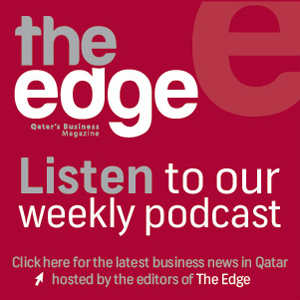Qatari insurance market: Bright outlook despite depressed hydrocarbon prices
Qatar is a unique market within the Gulf Cooperation Council (GCC) with an economy that has been rapidly growing on the back of natural gas. With diversification efforts added to this, the economy can support the growth in insurance companies and takaful operators, writes Blake Goud.
This is not to say that the drop in energy prices is not having an effect on the insurance and the takaful segment. Qatar represented USD34 billion (QAR123.8 billion) of the USD197 billion (QAR717 billion) in projects tendered across the GCC in 2015. This quantum of projects tendered, which represents a record amount, will continue to be supportive for insurance companies in 2016 since many projects will be completed only over a multi-year process.
The bigger challenge to Qatar’s insurers (including its takaful operators) comes from their dependence on investment income to offset high combined ratios, which is a measure of profitability used by an insurance company to indicate how well it is performing in its daily operations. The combined ratio is calculated by taking the sum of incurred losses and expenses and then dividing them by earned premium. The ratio is typically expressed as a percentage.
For the insurers and takaful operators included in the Finance Forward Middle East Insurance Outlook Report, the combined ratio for Qatari companies was 115 percent, compared to an operating ratio of 71 percent.
Taken together, these highlight a competitive market for underwriting (a combined ratio above 100 percent indicates that underwriting income is not sufficient to cover the insurers’ underwriting and operating expenses) within the backdrop of a strong investment market. The survey conducted for the report did not ask specifically about the asset allocation of insurers (other studies have found investments to be concentrated in real estate and equities), but it did ask about anticipated changes in asset class allocations.
We found that the most frequent asset class that insurance companies would reduce was real estate exposure, and that they would increase their investment grade and emerging market fixed income allocations, as the macroeconomic backdrop slows and the value of real estate and equities fall. Real estate firm DTZ saw the potential for rising vacancy in commercial real estate, in particular, as a source of price weakness. In addition, the Qatar Exchange All Share Index of equities fell from over 3600 to under 2300 (or 35 percent) during 2015 and has rebounded to regain about 40 percent of the lost value so far in 2016.
The drop in the two largest asset classes for many insurers is likely to have an effect, but a relatively small one on the 2016 prospects because the equity markets have stopped falling, for the time being, and because many insurers remain very well capitalised. It will be painful, but not overwhelmingly so, for insurers to rebalance their asset allocations. If they have held some assets for many years, they will likely be able to realise some profits, although not as many as if they sold before energy prices fell.
Reinvestment of proceeds
The challenge for these insurers and, in particular, for takaful operators, will be how to reinvest the proceeds from their real estate and equity holdings in fixed income. This is more of an issue for takaful operators than for insurers because a more limited amount of local currency sukuk is issued and it is in high demand from both insurers and banks.
Qatar Central Bank (QCB) had been issuing sukuks on a quarterly basis in 2013, followed by a massive issuance in January 2014, amounting to QAR11 billion. However, this dried up with relatively a much smaller issuance in April 2014, followed by a hiatus until the final four months of 2015 when a combined QAR8 billion volume tranche was issued. Future issuance trends from QCB will determine the ability of insurers to diversify their assets.
The outlook for Qatar’s insurers and takaful operators remains bright even if energy prices remain low. The healthy capitalisation of most insurers will allow them to survive both the highly competitive market where their underwriting profitability will remain squeezed. It will also allow them to better weather a shift towards a more balanced investment approach compared to the equity and real estate heavy allocation today. The unique challenge facing takaful operators is the inconsistent supply of sovereign (local currency-denominated) sukuk that provides them with a lucrative yield and lower risk investment to reduce their vulnerability they have today from a significant reliance on investment income to offset underwriting losses.
Blake Goud is chief research officer at Middle East Global Advisors.
Like this story? Share it.






